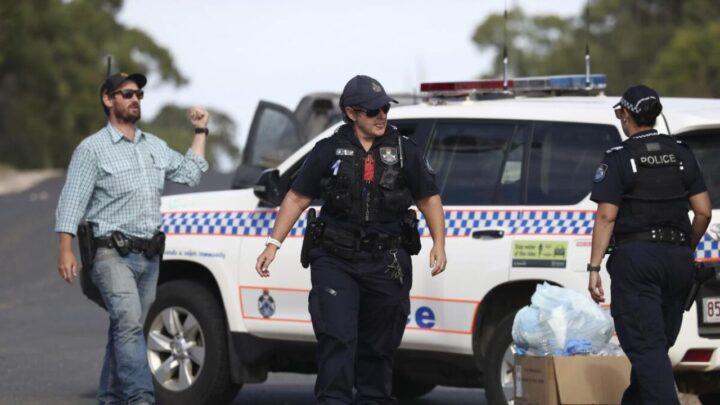Australia’s 2025 road-rule refresh tightens enforcement across several states and territories, adding a new $220-level penalty for select minor offences while lifting fines and demerits for high-risk behaviour. The goal is simple: fewer deaths and injuries on Australian roads through clearer rules and stronger deterrents. Drivers should expect broader camera enforcement (including in-car behaviour detection), tougher penalties for mobile-phone use and seatbelts, and targeted crackdowns on risky habits around crossings and school zones. Because road rules are set state-by-state, motorists should check their local transport authority to confirm exact fines, demerits and dates before they drive.

What’s changed in 2025: key Australia road rule updates drivers must know
Australia is rolling out a mix of national and state measures aimed at cutting fatalities. The headline for many motorists is a new $220-tier penalty now used in some jurisdictions for lower-level offences (e.g., certain pedestrian-related or minor compliance breaches), alongside stronger fines for phone use, speeding and seatbelts. Expect more AI-enabled cameras monitoring distraction and restraint use, plus targeted long-weekend enforcement. States like Queensland have increased a range of penalties, while NSW and ACT continue double-demerit blitzes on peak holiday periods. Always confirm the precise rule and amount where you live, because dollar figures and demerits differ by state.
- AI/enforcement cameras expanding to detect in-car behaviours
- $220-tier fines appear for select minor offences in some states
- Higher penalties for mobiles/seatbelts and speed across multiple states
- Frequent double-demerit operations on long weekends/holiday periods
New $220 fine: where it applies and how it affects everyday driving
The $220 fine level is intended as a wake-up call for “minor but risky” habits that escalate crash risk—think ignoring crossing rules or similar low-grade non-compliance where applicable. While $220 is modest compared with high-risk offences, it adds up quickly if repeated and can pair with demerit points depending on the rule and state. Practically, this means drivers and even pedestrians need to re-check the basics: obey crossing signals, respect lane/road-edge markings, don’t stop in restricted zones, and give way correctly. Treat $220 as the baseline you could face for smaller slip-ups—then verify your state’s schedule before you travel.
- Used for select “minor” infringements (jurisdiction-specific)
- May be paired with demerit points depending on the rule
- Designed to lift compliance with everyday safety behaviours
- Amounts and rules vary—always check your state authority
Harsher penalties for high-risk behaviour: mobiles, restraint use and speeding
Beyond the $220 tier, the big shifts land on behaviours that drive serious injuries phone distraction, not wearing a seatbelt, and speeding. Camera programs are expanding, fines have risen in several states, and police are running frequent blitzes on long weekends. In Queensland, for example, penalties for phone and seatbelt violations sit at the top end nationally, while NSW/ACT push hard with double-demerit periods. The takeaway for Australian motorists in 2025 is simple: put the phone away, wear your belt every trip, and watch your speed—because enforcement is broader, penalties are higher, and the margin for error is smaller.
- Camera detection (including inside-vehicle behaviours) is growing
- Seatbelt and mobile fines are among the toughest ever in some states
- Speeding thresholds remain a major focus across jurisdictions
- Holiday blitzes = higher risk of fines if you slip up

How to stay compliant on Australian roads in 2025 (practical checklist)
Plan ahead by checking your state’s latest penalty tables before a trip—especially interstate travel. Keep your phone out of reach and connected to approved hands-free systems if needed. Make seatbelt checks a ritual for every occupant, every time. Re-learn local rules around crossings, bus lanes, bike lanes and school zones, and watch for temporary limits and work zones. Finally, expect cameras in more places and targeted operations over long weekends. Combining these habits will keep you inside the law, protect your wallet from $220 (and much higher) fines, and—most importantly—help reduce road trauma across Australia in 2025.
- Check your state transport site before you drive
- Zero tolerance for phone-in-hand and unbelted trips
- Respect crossings, lanes, and school-zone rules
- Expect cameras and long-weekend blitzes
Indicative penalties & focus areas by state (examples)
| Area | Example focus in 2025 | Indicative penalties (examples) | Notes |
|---|---|---|---|
| National/All states | AI camera rollout; emphasis on phones, seatbelts, speed | Varies by state; new $220-tier used for select minor offences in some jurisdictions | Confirm exact offence + amount locally |
| NSW & ACT | Holiday double-demerit blitzes; distraction/seatbelts | Higher fines for mobiles/seatbelts; double demerits on long weekends | Check dates before holiday travel |
| Queensland | Tough penalties for mobiles & seatbelts; speed enforcement | Among the highest mobile/seatbelt fines nationally | Frequent targeted operations |
| WA / SA / VIC / TAS / NT | Localised changes incl. speed limits, work-zone safety, camera expansion | Minor offences may attract ~$220 tier where applicable; serious offences much higher | Amounts/debits differ—verify per offence |
FAQs
1 – Is the new $220 fine national?
No usage and offence types depend on each state/territory’s rules.
2 – Do $220 offences carry demerit points?
Sometimes—depends on the specific rule and jurisdiction.
3 – Are mobile-phone and seatbelt fines higher in 2025?
Yes—several states increased penalties and camera enforcement.
4 – Will double demerits apply on long weekends?
Yes in some jurisdictions (e.g., NSW/ACT)—check announced dates.





